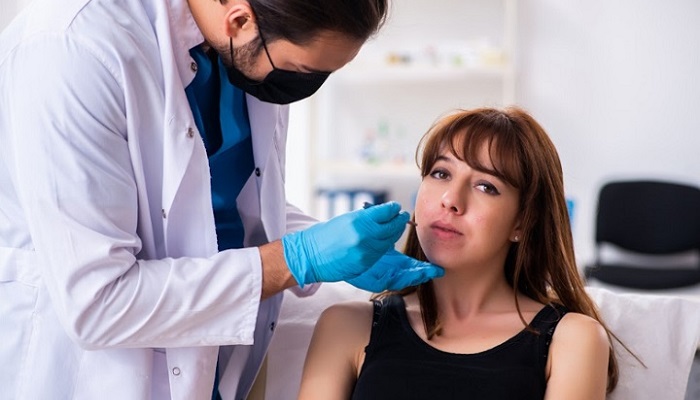Maintaining healthy skin is important to boost your confidence and protect your overall well-being. It helps you look good and keeps skin diseases away.
So, if you see your skin health deteriorating despite all your efforts, it’s time to visit a dermatologist.
In this blog, we will reveal seven essential tips for your first dermatology visit, so you can communicate with the doctor clearly and receive the right treatment.
Let’s dive in.
1. Bring Your Medical History and the List of Medicines You’re Taking
Gather your medical history, past reports, and the list of medicines you’re taking right now before visiting the dermatologist. The list of medicines you’re taking will help the doctor discern if any of your current medicines are causing allergies or skin problems.
On the other hand, the experts can use your medical history to further avoid any form of treatment or drugs that might be bad for your health.
If bringing a lot of papers seems difficult, store the reports and list of medicines in your phone to show the dermatologist during your visit.
2. Make Sure the Visit is Covered by Your Medical Insurance
Many health insurance policies cover dermatology visits and medicine costs either fully or partially. So, if you have medical insurance that covers the dermatology fees, make sure to bring the insurance card with you.
This tip might seem like an obvious one. However, many medical insurance holders often aren’t aware if their insurance covers the medical visits or completely forget to bring the card.
This might cause them to pay the fees out of their pocket, even if they could have saved money here.
And even if you’re going to a dermatology visit without insurance, don’t worry too much. There are many prescription discount websites out there that will help you save up to 80% on your medicines and even help you find a capable and affordable dermatologist near your residence.
3. Prepare the List of Questions You Would Like to Ask
If you’re going for a dermatology visit, you must also have many questions related to your skin and how you can take better care of it. So, before your visit, make a list of these questions and save it on your phone.
Whether they are related to specific skin conditions, side effects, lifestyle, diet, or treatment options, jotting them down will help you remember them, allowing you to get the most out of your visit.
4. Prepare to Have a Full-body Examination
In many cases, dermatologists might want to go through a full-body examination to find the root of your skin problems. Sure, you might just have one or two areas of concern now. But it doesn’t mean that the rest of your body’s skin is fine.
So, you should expect your doctor to run a full-body examination to get an idea of your overall skin health and find potential hidden skin issues.
5. Wear Comfortable Clothes
Since you might need to go through a full-body examination, it’s better to wear comfortable and loose-fitting clothes on the day of your visit. With loose-fitting clothes, it will be easier for the doctors to inspect your affected skin area and complete other tests.
For example, you can consider wearing a loose-fitting T-shirt if the skin on your back or hand is affected. You can also try wearing shorts or pants that you can easily roll if your legs have skin problems.
6. Arrive at Least Twenty Minutes Early to Fill out the Paperwork
If you’re visiting a dermatology clinic for the first time, you would probably need to fill out a few documents before meeting the dermatologist.
After all, the clinic and the doctor would need your medical reports, name, address, age, and other medical information before suggesting any sort of treatment plan. And this paperwork is a way to update your records.
So, we suggest you arrive at the clinic at least twenty minutes before your actual visit time to fill out these documents.
7. Expect a Follow-up Visit
Your first visit is not the end of your dermatology consultations. The doctor might want to see you again soon with a follow-up visit to see the effect of the prescribed medicines and your skin condition.
So, it would be better to keep your schedule relatively open for the next few weeks. After all, if you delay the follow-up visit for months on your end, it will only delay your treatment process. Something you probably wouldn’t want.
Keep your schedule open and expect a follow-up visit soon. Do that, and you can receive proper treatment and regain your healthy skin sooner.
Conclusion
Now that you know what you must do before your first dermatology visit, it’s time to put them into action.
Gather your medical history, get your medical insurance card, wear comfortable clothes, and arrive at the clinic at least twenty minutes before the appointment. This way, you can make the most out of your first visit without much hassle.


















